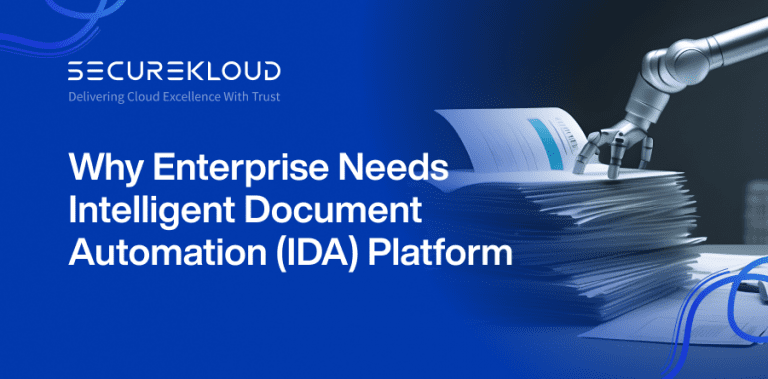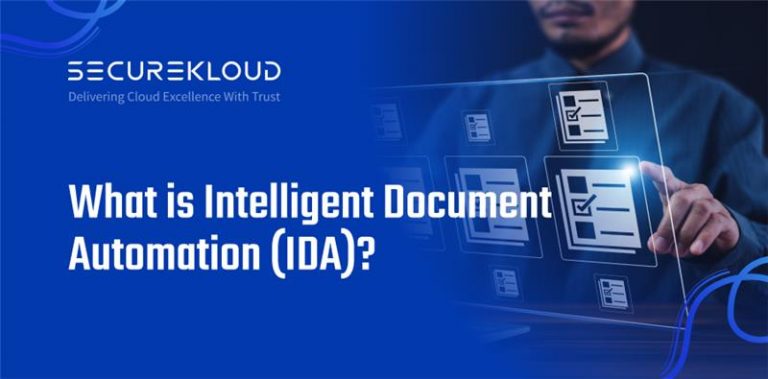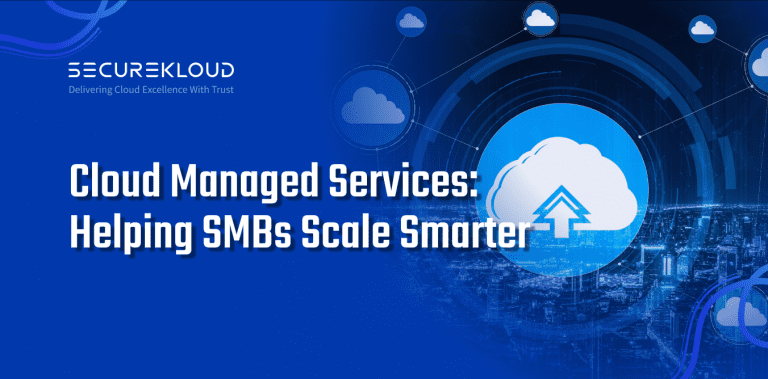- 4Minutes
- 782Words
- 3Views
Some of the major challenges in the cloud for any business is securing their application & data and ensuring their required compliance and standards are met at any point of time.
Across all the industries, businesses recognize that traditional security methods can no longer compete with the evolving threats in cloud space owing to the large number of security patches that get released every day by public cloud vendors. It is humanly impossible for the enterprises to keep track of all the security updates and failure to do so will make them non-complaint. Also, the regulatory requirements further taxes enterprises. This mandate enterprises to have their infrastructure continuously secured and continuously compliant. With the increasing scale of assets and constant enhancements in the cloud technology, the organization’s IT infrastructure is becoming more complex to manage.
This requires the enterprises to have a Next Gen Managed services expertise to monitor, manage and automate their cloud infrastructure and related assets to ensure continuous security and to meet the continuous compliance. Let us look into some of the key considerations on your way to achieving the same
Continuous Cloud Security
Continuous security is all about competence. As businesses adopt different cloud strategies including multi/hybrid clouds, to handle multiple projects and operations, managing such infrastructure becomes a task of its own. This will require a high level of expertise to manage and maintain high availability of application and data. Additionally, the IT team must work on protecting the infrastructure from potential risks and security breaches. The main challenge faced by many organizations is managing such complex infrastructure which does not usually resonate with their core business goals for various reasons. And more importantly, when it is done in a wrong way, they are bound to get exposed to major security threats that hampers the business continuity
Some of the key factors to consider for continuous security :
- Continuous monitoring and visibility of the infrastructure
- Efficient use and integration of security tools at various layers
- Periodical review and automation of security controls
- Periodical security testing and review
Continuous Cloud compliance
Adhering to compliances, standards and regulations like HIPAA, GDPR, GxP, ISO 27001, NIST 800-53, NIST 900-171, PCI and SOC 2, etc continuously is a major challenge faced even by the large enterprises in regulated industries. Enterprises must have the right processes, technology and people in place to seamlessly meet all the compliance requirements at all time and support periodical audits.
The key consideration for continuous compliance:
- Centralized monitoring and reporting
- Understanding and implementing the required technical controls
- Enabling the resources and services to produce logs
- Risk assessment & Mitigation strategies and implementation plan
How Amazon Inspector helps in achieving Continuous Security and Compliance
Amazon Inspector is an automated security assessment service provided to enhance the security and compliance of applications that are deployed on AWS. This tool automatically assesses the exposure of applications for vulnerabilities and any irregularities by following best practices. It also gives a detailed assessment report prioritized based on security levels to act via API or its console. Amazon Inspector assessments are given as a pre-defined package of rules mapping to most common security best practices and vulnerability explanations in the industry. These rules are frequently updated by AWS security researchers to keep up to the business standards requirements.
Benefits of Using Amazon Inspector are
- Helps in identifying the issues in application security before they are deployed or while they are running in a production environment
- It is an API-driven service that analyses network configurations and uses an optional agent for visibility into instances. Thus, it provides an easy way to build Inspector assessments into the existing DevOps process for making security assessments an integral part of the deployment process
- Reduce the risk of introducing security issues during development and deployment by proactively identifying vulnerabilities thereby increasing the development agility
- Gives visibility to security teams about testing which is being performed for applications on AWS to streamline the process of validation and security & compliance standards are being followed through all stages of the development
- Allows to define best practices for specific applications, confirms adherence to the standards to simplify security enforcement and support proactive management of security issues
Thus, Amazon Inspector fits easily into agile deployment models (continuous integration continuous deployment and auto-scaling) to ensure continuous security and compliance.
Every organization’s infrastructure security standards and compliance or guideline requirements are unique as its business. And it is equally important to implement the recommended best practices in the industry along with Continuous security and compliance, to optimize the performance and reduce the cost. Usually, an efficient Cloud Managed Services partner can carry them out and will bring vast knowledge on the same.





